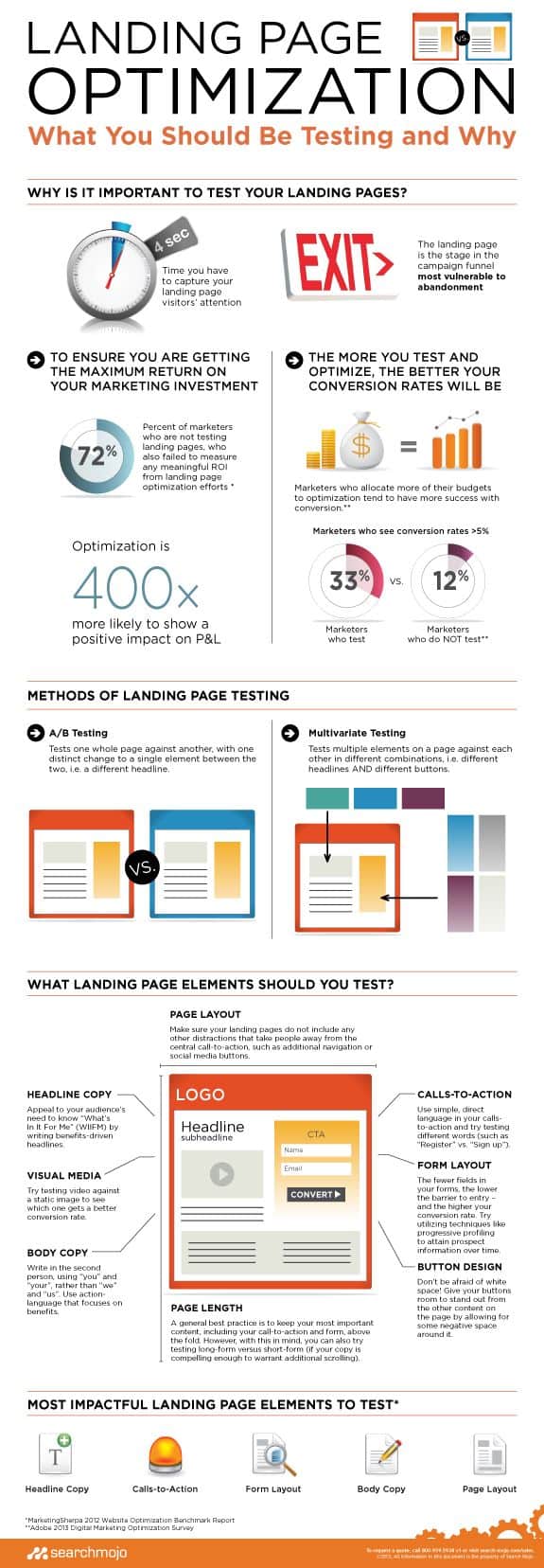As I’m sure you know by now, landing pages are crucial part of every SEO strategy. When you build links, those links need a place to point, and people need a place to land. It’s not just a clever name, you need to plan on people actually landing on your landing pages, and you need to look at your work through their eyes. Is it appealing? Is there a clear and convincing call to action? Does it make you want to actually submit a lead, or does it leaving you feeling a little flat? When it comes to landing pages, you shouldn’t rely on your gut. You need to get a little more…scientific. Let me explain how to experiment, and why experimentation is crucial to your SEO success.
You remember the scientific method from school right? I mean, there’s no way you forgot such an important cornerstone of science…right? Well, if you’re like me and spent most of high school trying to convince the girl with the long legs and the short skirt to be your lab partner, you may need a refresher. Here are the steps of the scientific method in all their glory:
- Ask a Question
- Do Background Research
- Construct a Hypothesis
- Test Your Hypothesis by Doing an Experiment
- Analyze Your Data and Draw a Conclusion
- Communicate Your Results
Pretty straightforward, right? They are so simple that it’s likely you’ve been following them without even realizing it. Now, let’s take a look at how you can apply these same steps to building a proper landing page.
1. Ask a Question
In this case, we’re asking how can we make our landing pages perform better.
2. Do Background Research
Look into landing page trends, what is working for other, what the experts are recommending, and how you can apply these techniques to your page.
3. Construct a Hypothesis
The key to the scientific method is to keep your variables low. Make sure you are testing one thing and one thing only. In this case, we’ll use the form submission button text. If that seems like an insignificant element, you’re wrong. It’s actually a huge factor for landing page success. So our final hypothesis will be, “If the button text is changed from ‘submit’ to ‘click here’, more people will submit the form.”
It’s not the neatest hypothesis, but you get the picture.
4. Test Your Hypothesis
Now that you have your hypothesis, it’s time to test. With landing pages, much like scientific experiments, you use basic A/B testing, where page A is your control, and B is your variable. In this case, your control is “submit” and your variable is “click here.” Try each one, either for a set amount of time or at the same time on two different pages, and record the results. Make sure there is no other variable than the text of the button.
5. Analyze Your Data
This part should be pretty easy. Of the two button-texts, which one caused more people to submit the form? If you actually conducted the experiment, you’ll have found that, on average, people are 15 percent more likely to submit the form if the text on the button reads “click here.” Pretty substantial difference for such a small change, right?
6. Communicate Your Results
In the business world, this means you hold onto this data, and if anyone gives you any guff for changing the button text, you communicate your results by way of showing them the numbers.
So that’s the scientific method of landing pages. Test your own and see what you come up with.
As far as what to test, this infographic below has some great suggestions about what elements of your landing page can benefit from testing.
